SEARCH






|
|
|
|


by Editor Lourens Durand
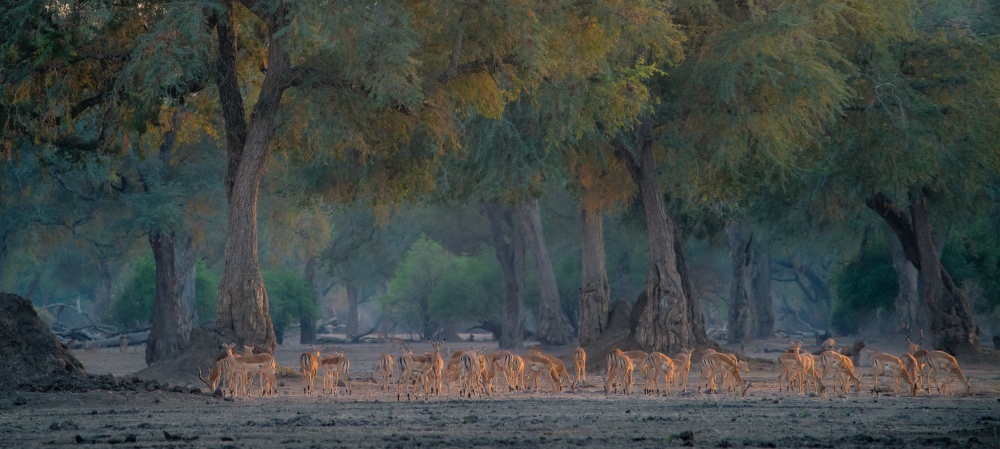
'Impalas at Dawn' by Giovanni Casini
The natural environment holds many perils for its inhabitants, and wild animals have evolved behavioural strategies in response to these threats, including:
Cooling methods
Seasonal feeding changes
Specific activity periods
Wallowing
Scratching
Facilitative grazing
Camouflage
Grooming
Let’s have a look at some of these in the context of the African bush.
Impalas, although only found in grassland areas where there is extensive shrub cover, are active only during the daylight hours, and are able to maximise food resources by browsing during the winter and grazing during the summer, when the grass is more nutritious. It inhabits the ecotone region between grassland and woodland, a region which carries a high parasite load, resulting in Impalas having to fight off an abnormally high number of disease-causing ticks. It does this in three ways:
* by painstaking grooming, as evident by their shiny coats. Impala have modified teeth, the lower incisors loose in their sockets and splaying out to act like a comb that removes dirt and ticks as they groom themselves;
* they participate in all-grooming, or reciprocal grooming, where they assist each other to reach more difficult areas of their bodies;
* they allow oxpeckers on their backs to assist in removing ticks (the Impala is the smallest animal that allows this). Males during the rut may carry more oxpeckers, because they have less time to groom themselves.
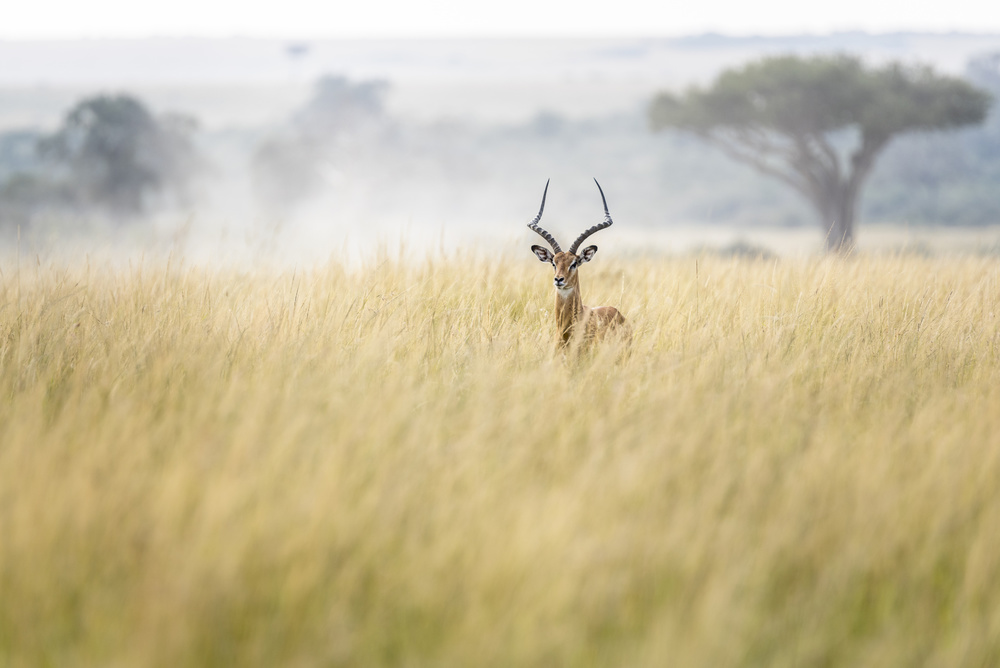
'Sweet and lovely impala in Masai Mara' by Lucie Bressy
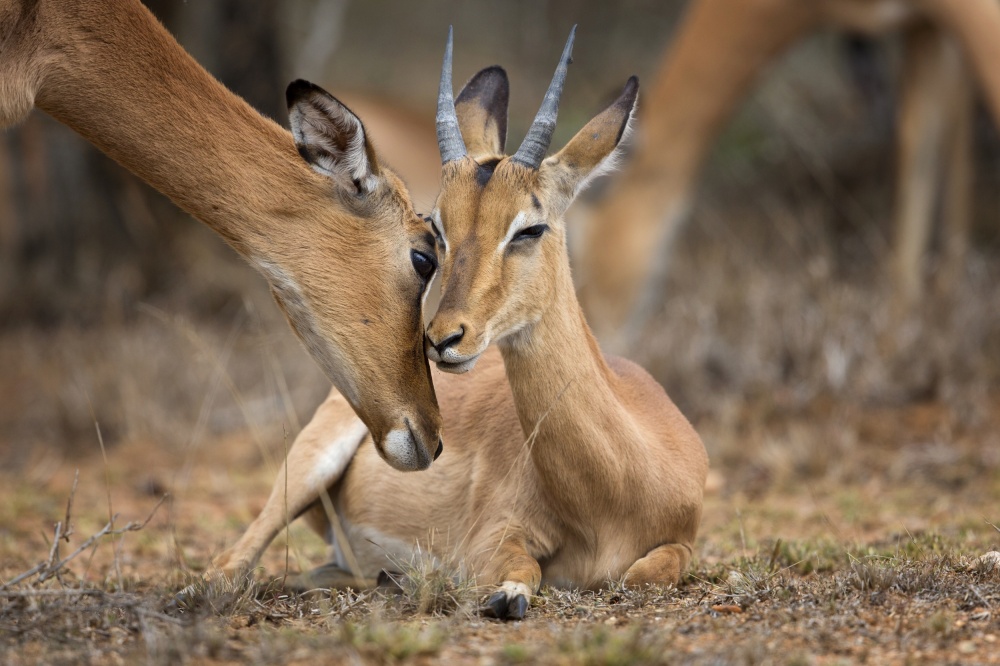
'A Moment of Love' by Mario Moreno
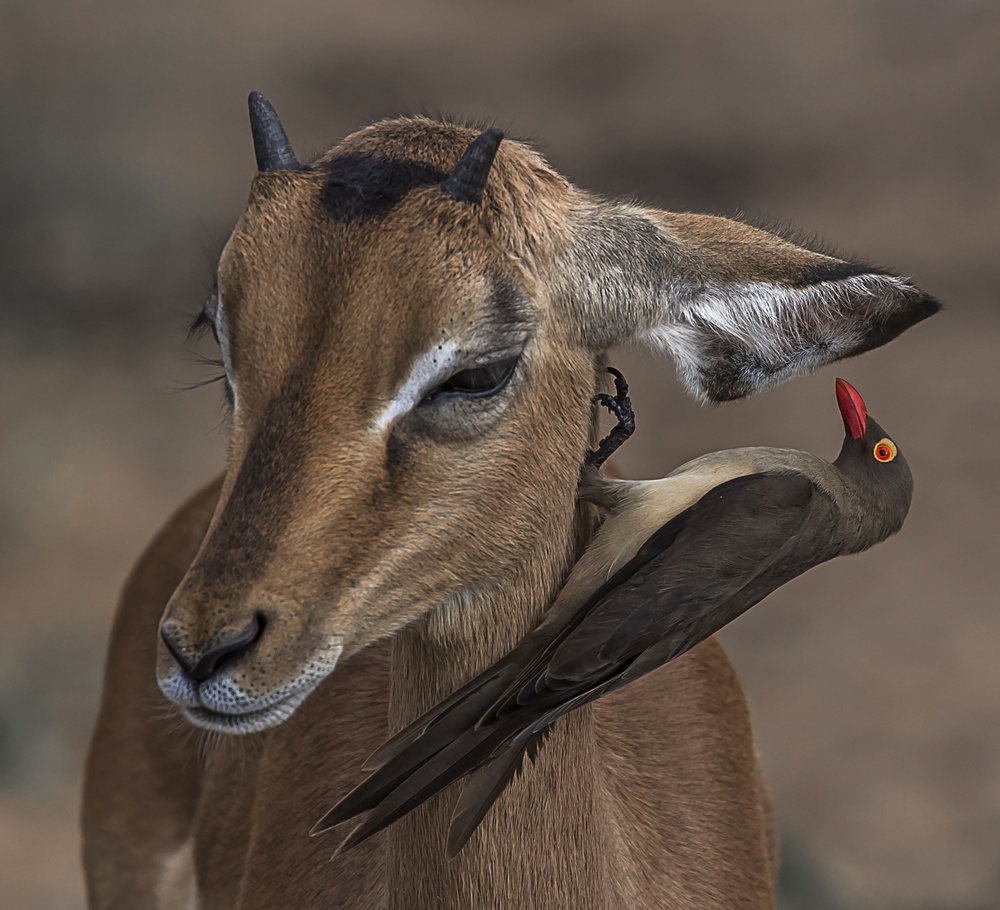
'A word in Your Ear' by Lourens Durand
Impalas make use of countershading to camouflage themself against the light and shade of the bush. The dark colour on their backs and their pale belly make them blend in with the bush as the natural reflection of light is reversed.
Gemsboks have evolved a number of behaviours that enable them to survive in their semi-desert habitat. During hot periods they feed at night, when the moisture content of foliage is higher. They have concentrated urine and dry faecal pellets to conserve water and are able to allow their body temperature to rise during the day, dissipating the heat at night when the air is cooler. At the same time, their brains are protected from overheating by an air conditioning system made up of a network of fine blood vessels in the nose that cool down rapid influxes of air caused by the Gemsbok’s panting. In summer, when new grass is shooting, they eat mostly grass but, in winter they eat more nutritious leaves as well as juicy melons. Using their long horns, they can dig up to a metre deep to find tubers and roots for their moisture.
Springboks can survive without having to drink in drier desert regions, by eating succulent melons and by grazing at night when the moisture content of grass can rise from 8% to 26%. During hot summer days, they will graze with their white rumps facing the sun to reflect the heat (an example of counter shading) and, in so doing, lose less water in keeping cool. During cold winter days, they may lie in the sun to warm up. Before the times when fences were erected, Springbok would migrate in great numbers from the northern to southern, following the rains and nutritious grazing.
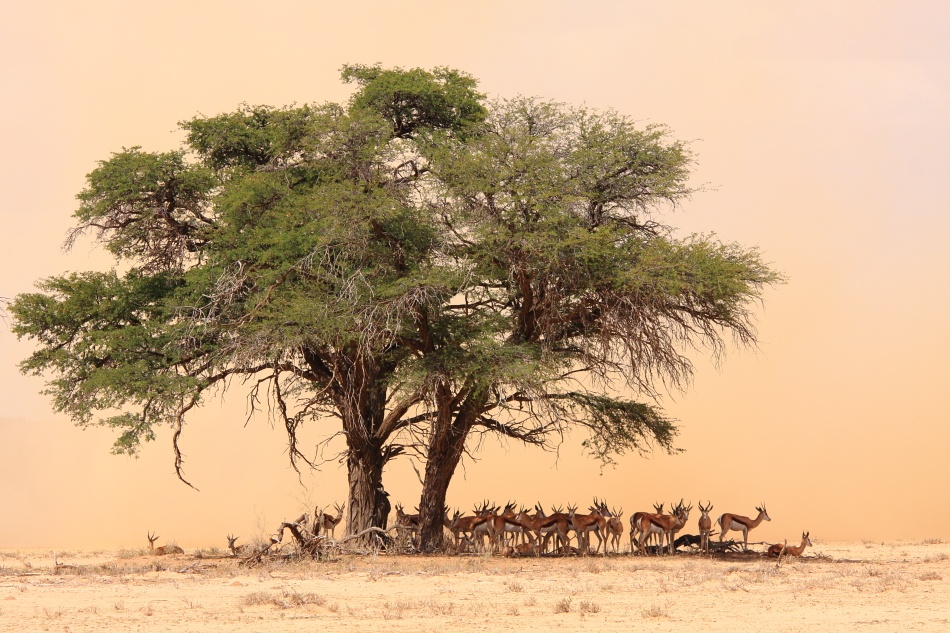
'Sheltering from the Storm' by Berndt Weissenbacher
Buffalos need regular access to water and are very sensitive to heat. They graze in the early morning or late afternoon, and rest in the shade during the heat of the day. They may even graze at night during especially hot periods. They also like to wallow in shallow water or mud pools to cool down and get rid of parasites (a single buffalo may hold up to 10000 ticks or more). Buffalo also assist with facilitative grazing, in that they open up long grass veld for Zebra and Wildebeest, who prefer shorter grasses. Adult male buffalo often wallow in mud to protect them from biting flies and ticks and to keep cool. Wallowing appears to have some social significance, as females and young buffalo rarely do so.
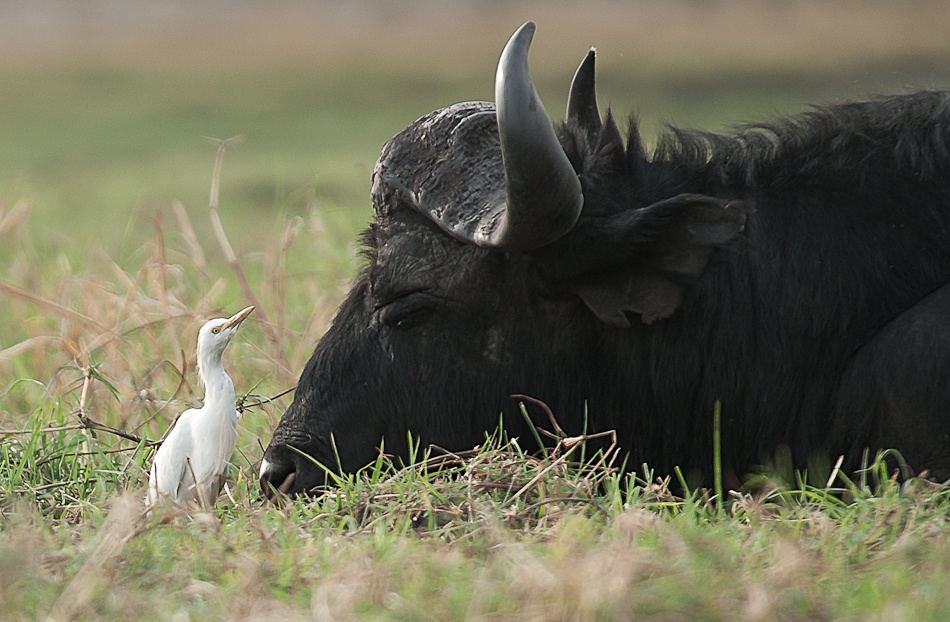
'Friends for life' by Hilde Ghesquiere
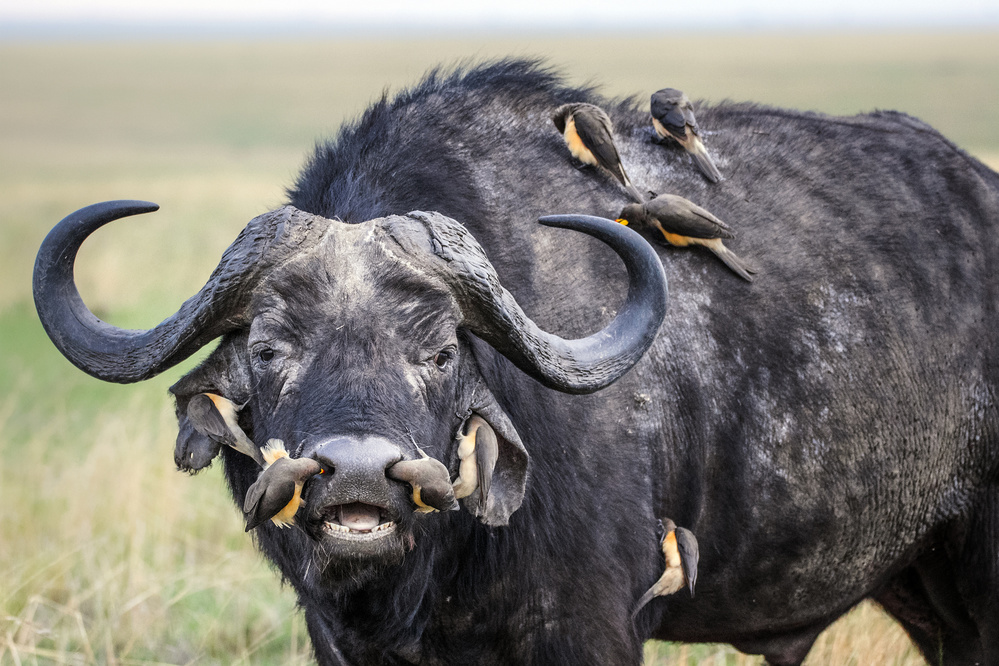
'VIP Cleaning Service' by Richard Susanto
Hippos are extremely sensitive to sunlight and spend most of their day submerged in water, grazing at night. They are also fiercely territorial, putting up a fight at the slightest provocation.
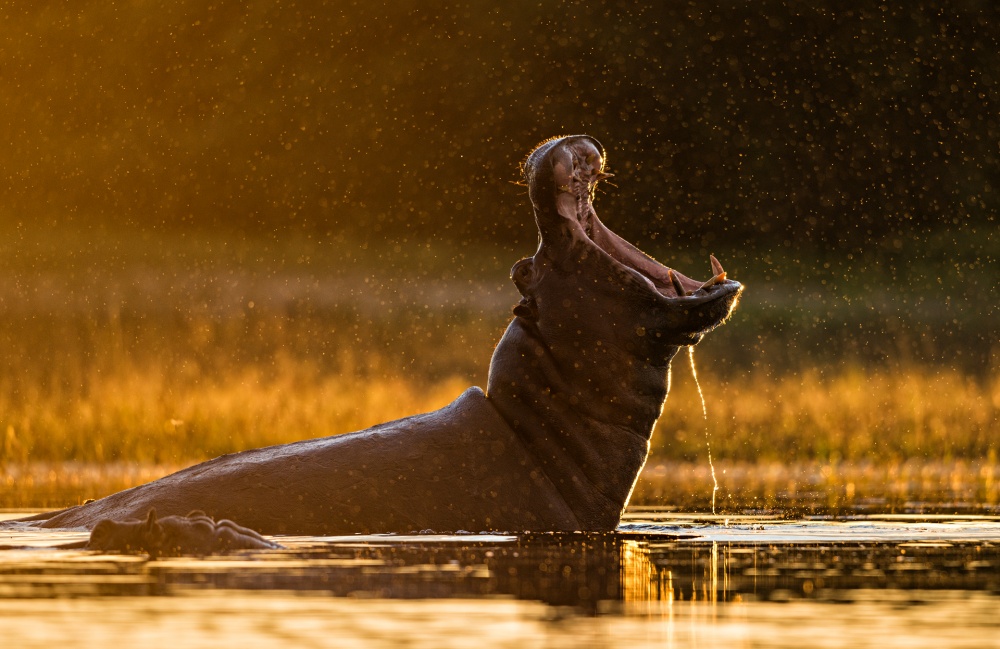
'Golden Jaws' by Morkel Erasmus
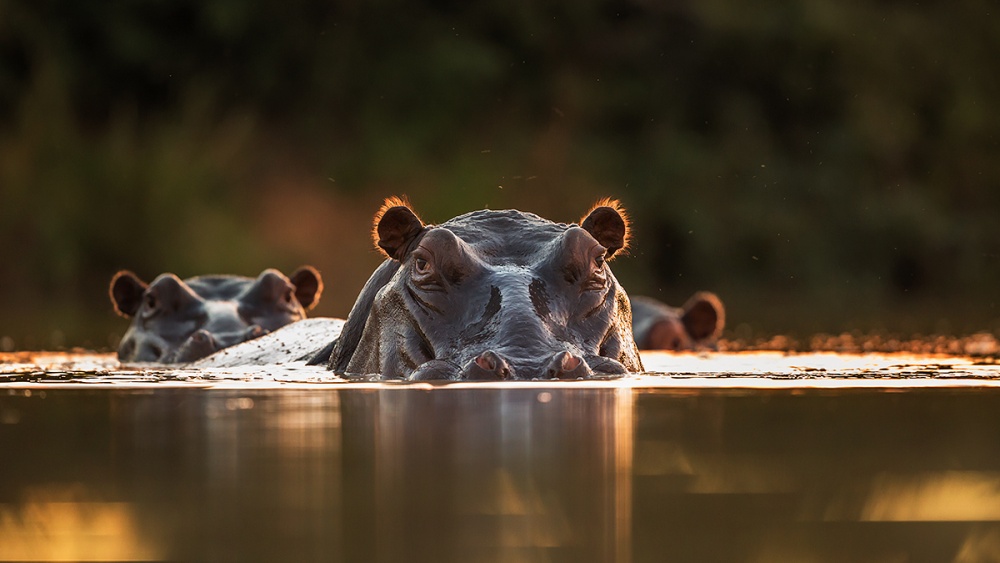
'Sunset Pool' by Hillebrand Breuker
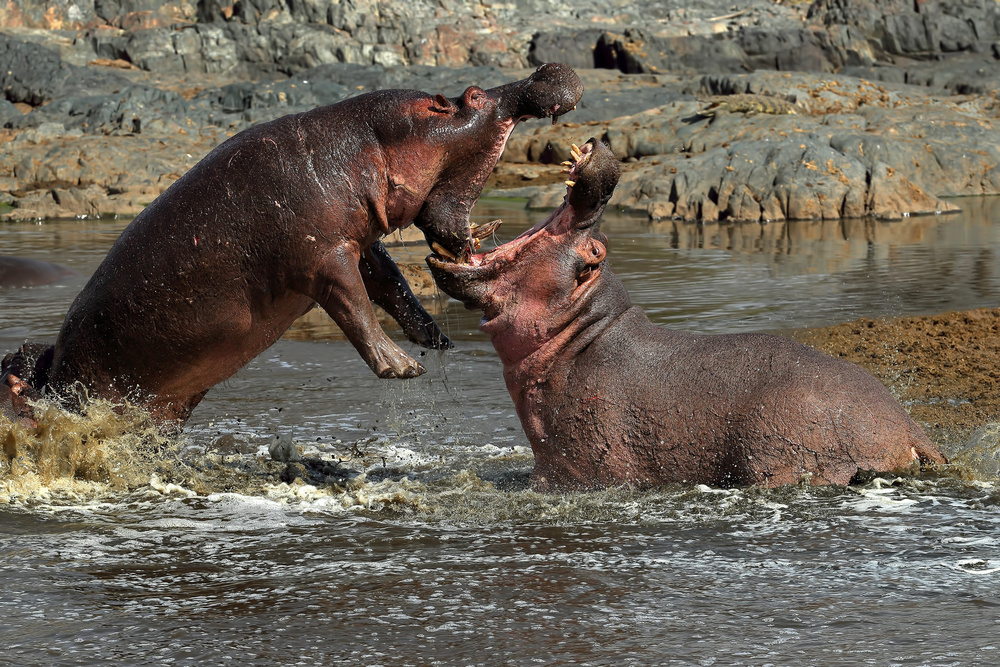
'Hippos fight' by Nicolás Merino
Elephants frequently wallow to cool down and to get rid of skin parasites, often followed by extensive scratching against the branches and trunks of trees to dislodge the parasites. Elephants eat more shoots and leaves during the wet season than the dry, during which they will eat more bark, branches and woody stems, and may even dig for roots.
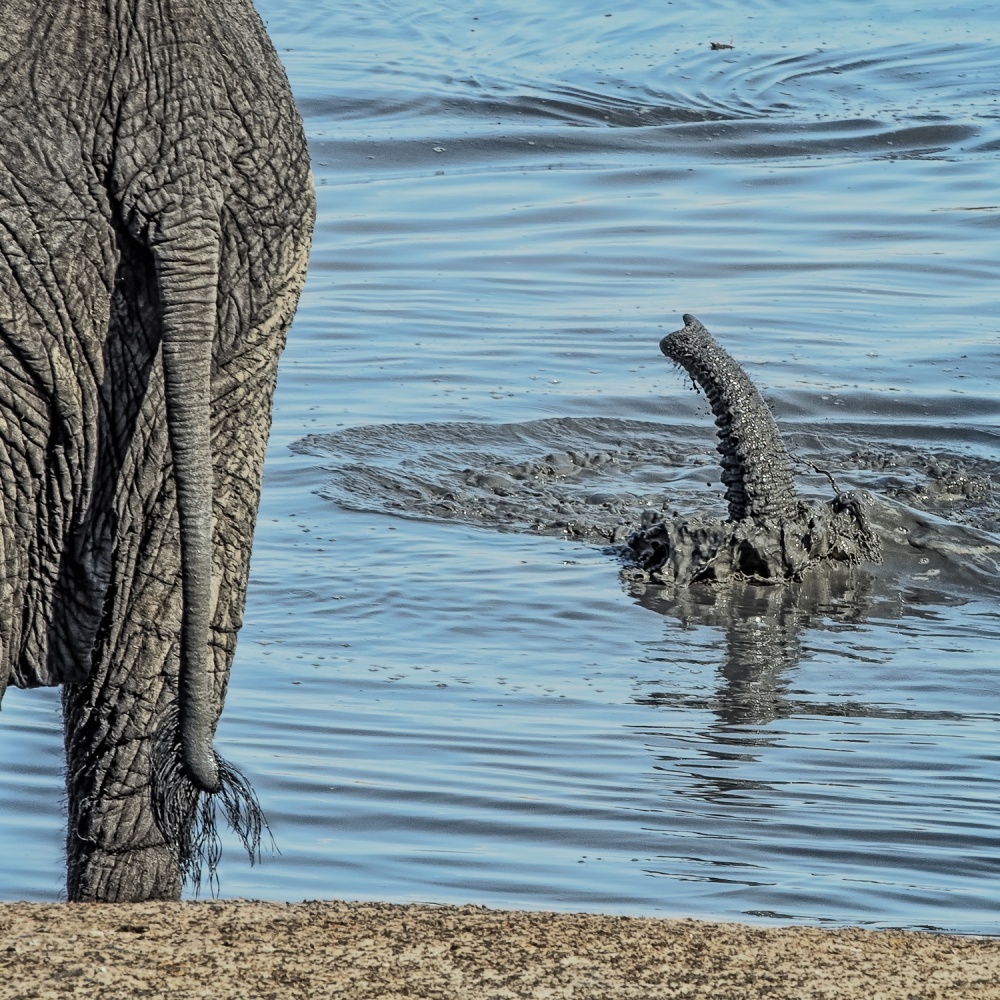
'who took the stepstones away?' by Piet Flour

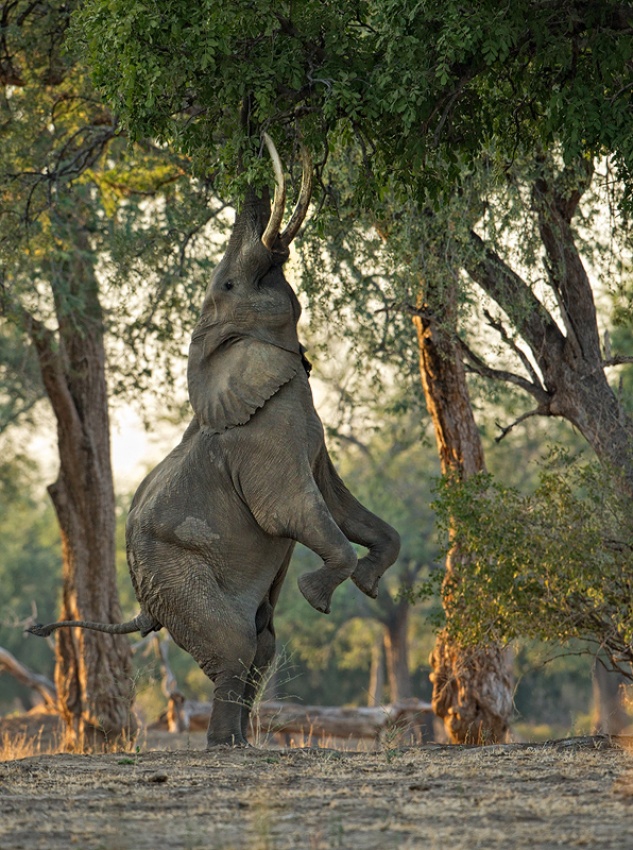
'A Fine Balance' by Morkel Erasmus
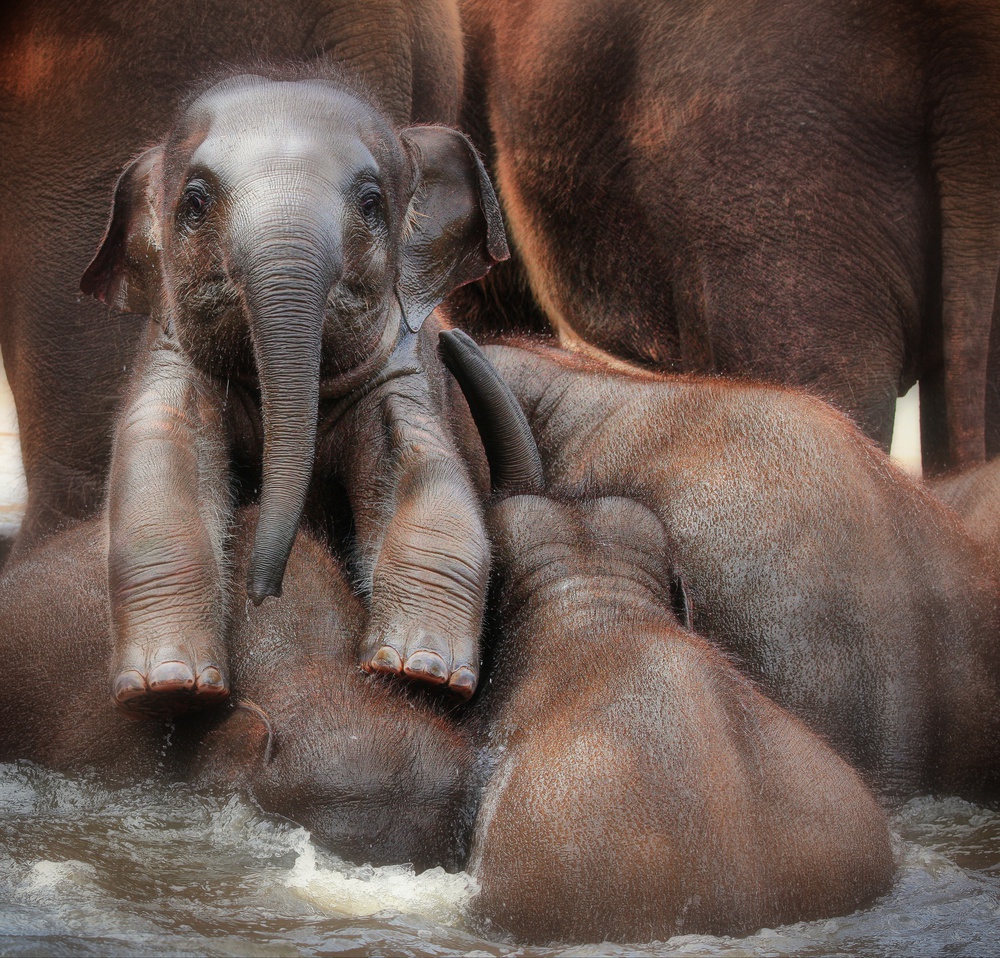
'THE PROUD VICTOR (or THE WINNER'S GLOW)' by Antje Wenner-Braun
Rhinos also enjoy a mud bath and a good scratch. They often have favourite scratching posts in the form of tree stumps or rocks that they have polished smooth by regular rubbing. Rhino (and other large herbivores) are often associated with Cattle Egrets, who peck ticks off their hide or insects that are flushed out of the long grass as the they graze. This is advantageous to both species, as the Rhino’s health is preserved by the removal of disease-causing ticks and the Egrets are rewarded with an easy meal.
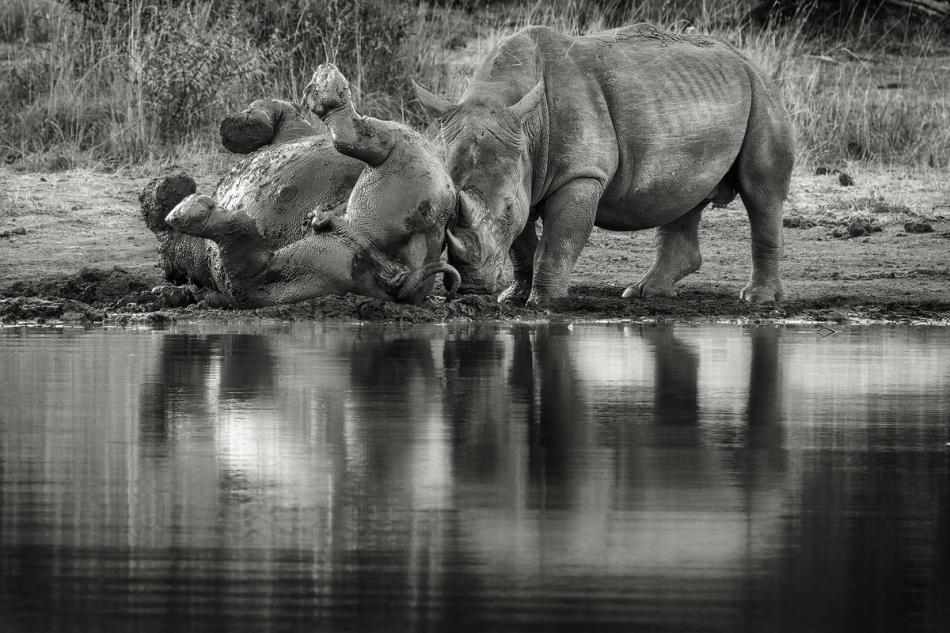
'Rhino Mud Bath' by Rudi van den Heever
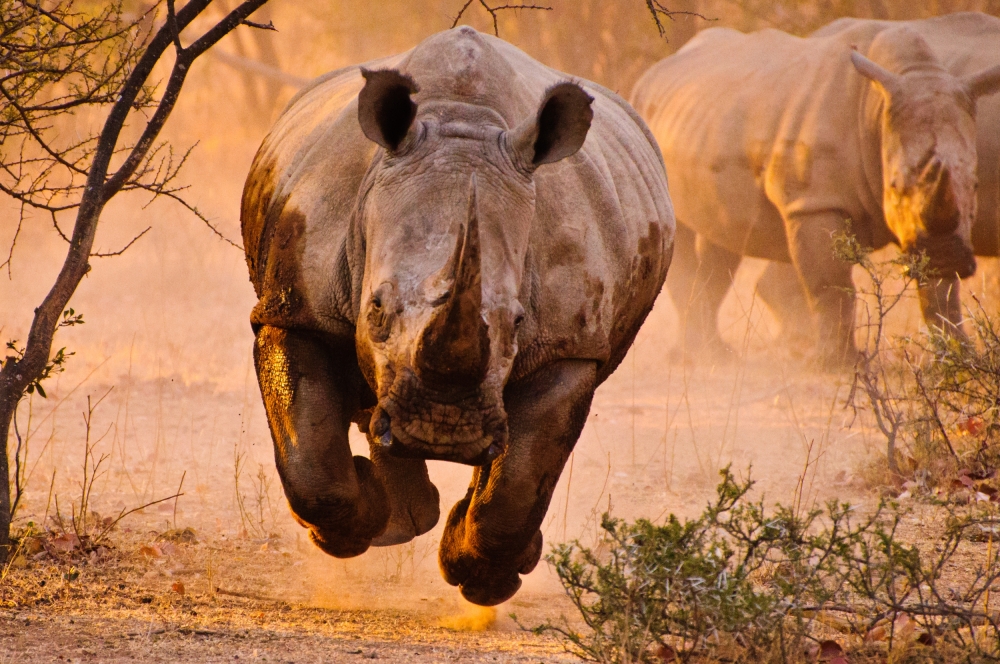
'Rhino learning to fly' by Justus Vermaak
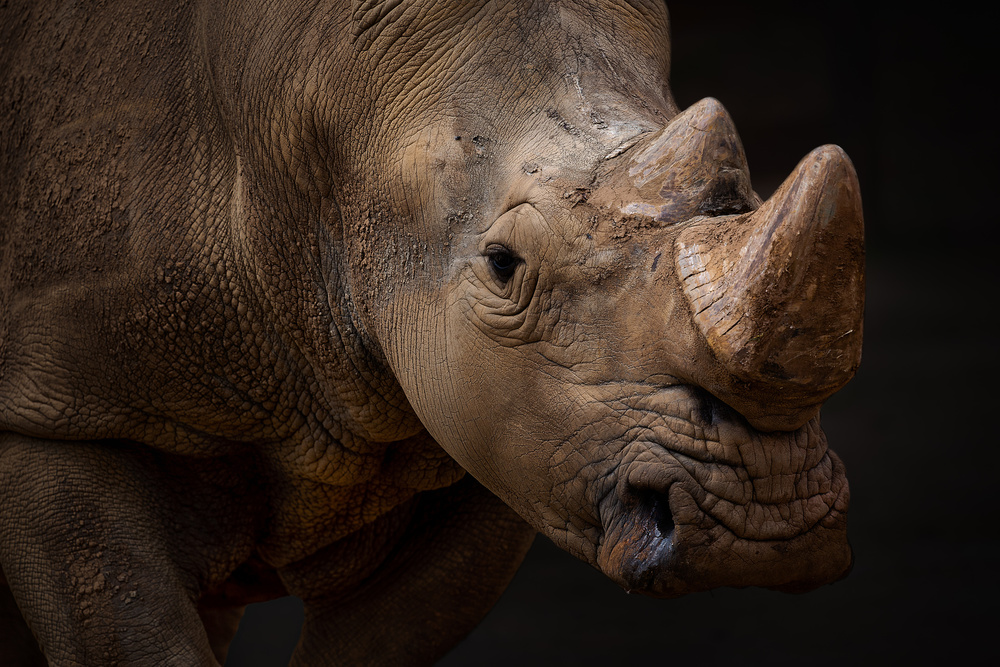
'Bulldozer' by Juan I. Cuadrado
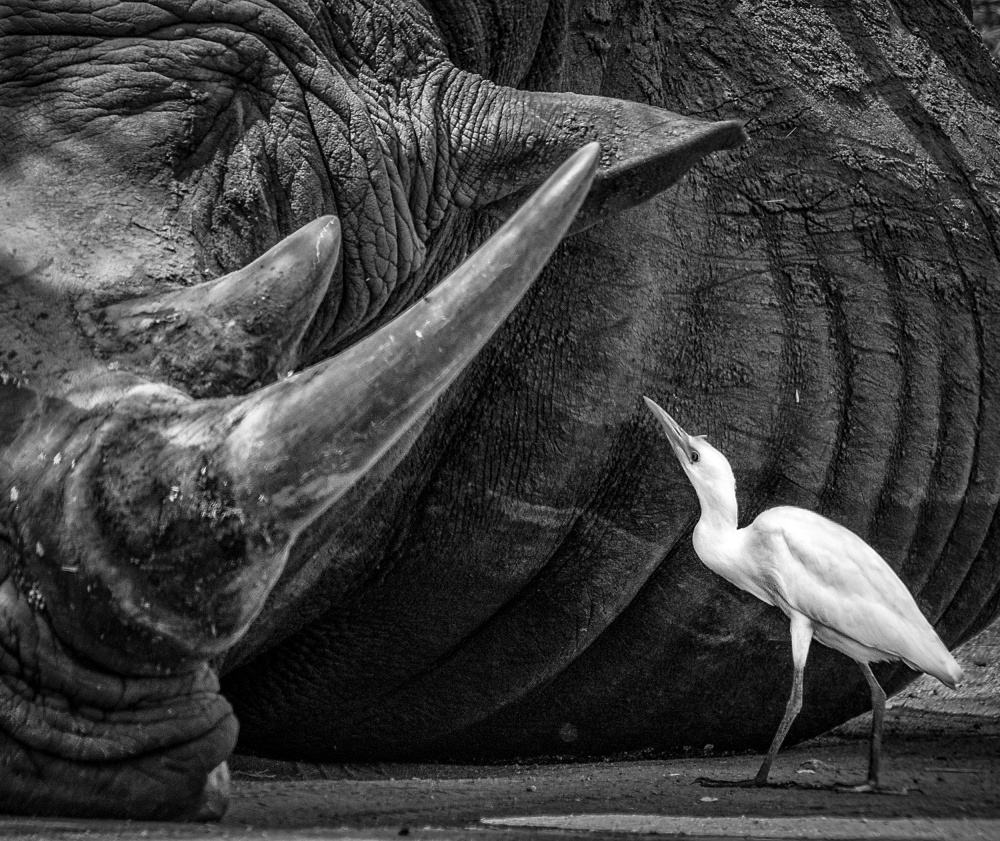
'Personal Advisor' by Giovanni Casini
In closing, observing animal behaviour in the wild is fascinating, especially when one understands the driving force behind such behaviour.
Editor Lourens Durand
 | Write |
 | Mike Kreiten CREW Actually the "flying" rhino was the photo that brought me to 1x. Funny to find it in your awesome collection, Lourens. Thank you for the very appealing article! |
 | Marco Pozzi PRO Thank you so much Lourens for having selected a picture of mine. Thank you dear Yvette too
Best
Marco |
 | Yvette Depaepe CREW You're welcome, Marco ! |
 | Yvette Depaepe CREW Interesting article, Lourens! Thanks a lot. Congratulations to all the authors of the selected images. Cheers, Yvette |